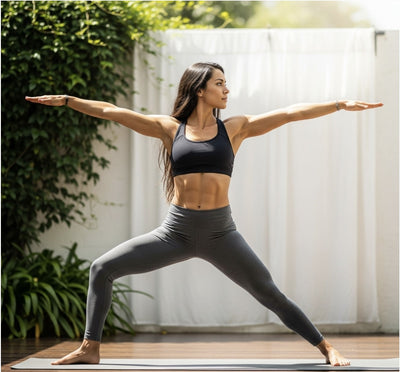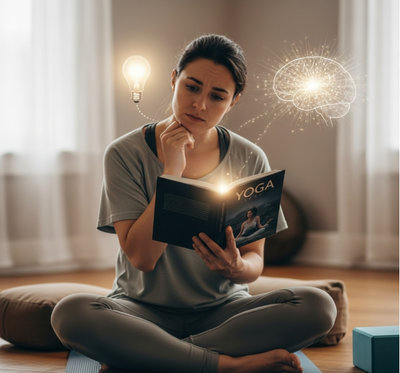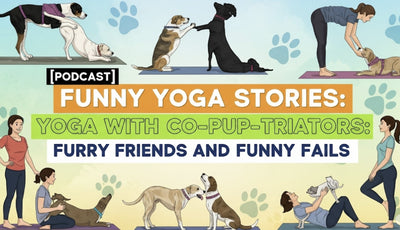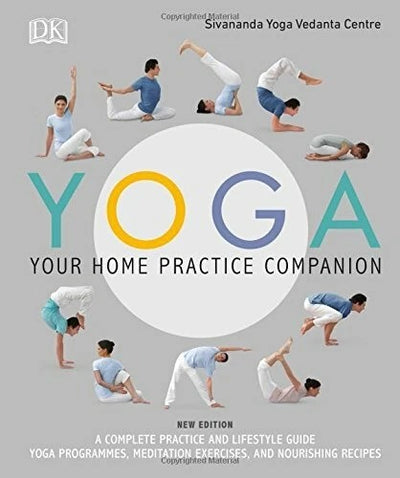
Structuring a Vinyasa Flow Class: How to Sequence Poses - 5To9STyle
Share
Structuring a Vinyasa Flow Class: How to Sequence Poses
The Art of the Flow: Structuring a Vinyasa Yoga Class
Vinyasa Flow Yoga is celebrated for its dynamic, creative, and fluid sequences. Unlike styles with fixed sets of postures, Vinyasa allows teachers immense freedom in movement to design unique classes that keep practitioners engaged and challenged. However, this freedom comes with responsibility: an intelligently sequenced Vinyasa flow is crucial for a safe, effective, and transformative yoga practice.
Whether you're an aspiring yoga teacher or simply a curious practitioner who wants to understand the methodology behind a great class, understanding the principles of sequencing is key. It's about building a journey, guiding the body and mind through a balanced arc of energy, and ultimately leading to a state of calm and integration.
The Core Principles of Intelligent Sequencing
Effective Vinyasa sequencing is an art form that balances creativity with anatomical and energetic considerations. Here are the fundamental principles:
- Start with a Clear Intention (Dharma): Every class should have a theme or intention, whether it's building strength, opening the hips, cultivating compassion, or exploring a specific peak pose. This intention acts as your roadmap.
- Warm-Up Adequately: Never jump straight into intense poses. A proper warm-up prepares the body for movement, increases blood flow, and gently awakens the muscles and joints. This phase often includes gentle movements, breathwork (pranayama), and setting the class intention.

- Build Gradually (Krama): Progress from simpler to more complex poses. Think of it like building a pyramid: establish a strong base before moving to the apex. This gradual progression minimizes injury risk and allows the body to adapt.
- Balance and Counter-Posing: For every action, there should be a balanced counter-action. If you perform a deep backbend, follow it with a gentle forward fold. If you work one side of the body, balance it with the other. This ensures equilibrium and prevents muscular imbalances.
- Link Breath to Movement (Vinyasa): The core of Vinyasa is the synchronized breath and movement. Every inhale and exhale should correspond to a specific transition or action within a pose, creating a continuous, meditative flow. This is where your chosen yoga mat provides crucial grip.
The Arc of a Vinyasa Class: A Standard Structure
While creative freedom is central, most well-structured Vinyasa classes follow a general arc:
1. Centering and Intention Setting (5-10 minutes):
- Begin with a comfortable seated position.
- Focus on breath (e.g., Ujjayi breath).
- Set the intention or theme for the class.
2. Warm-Up (10-15 minutes):
- Gentle movements to awaken the spine and major joints (e.g., Cat-Cow, simple twists, gentle stretches).
- Focus on connecting breath to these initial movements.
3. Building Heat (Surya Namaskara & Standing Flows) (15-20 minutes):
-
Sun Salutations (Surya Namaskara A and B) are crucial for building internal heat (tapas) and establishing the rhythmic Vinyasa flow.
-
Flows incorporating standing poses (e.g., Warrior sequences, Triangle, Half Moon) to build strength, balance, and prepare for more challenging poses.
4. Peak Pose Preparation & Peak Pose (15-20 minutes):
- This section includes specific poses that build up to a challenging "peak pose" that aligns with the class intention (e.g., arm balance, inversion, deep backbend).
- The peak pose itself is introduced, often with modifications.
5. Cool-Down & Counter Poses (10-15 minutes):
- Gentle stretches and counter poses that release tension from the peak pose and gradually bring the heart rate down.
- Often includes seated forward folds, gentle twists, and hip openers.
6. Savasana (5-10 minutes):
- Final resting pose, allowing the body and mind to integrate the physical and energetic benefits of the practice. This is essential for nervous system regulation and holistic well-being.
Tips for Creative and Effective Sequencing
- Know Your Audience: Tailor your sequence to the level and needs of your students. A beginner's class will differ greatly from an advanced one.
- Theme Your Class: A clear theme (e.g., "Open Your Heart," "Grounding Flow," "Twist and Detox") can guide your sequencing and provide a cohesive experience.
- Use Props Wisely: Encourage the use of yoga props like blocks, straps, and blankets to make poses more accessible or to deepen stretches safely.
- Observe and Adjust: As a teacher, be attentive to your students' energy and adjust the sequence on the fly if needed.
- Practice, Practice, Practice: The best way to learn sequencing is by practicing different classes and experimenting with your own flows.

Structuring a Vinyasa Flow class is a rewarding blend of technical knowledge and creative expression. By following these principles, you can craft intelligent, safe, and inspiring sequences that empower practitioners to move with freedom in movement and deepen their connection to body, breath, and mind. Having versatile yoga wear also aids in the fluidity of movement within the class.
Master the Art of Flow
Ready to deepen your understanding of Vinyasa sequencing and enhance your teaching or practice? Explore the principles of intelligent flow and create balanced, impactful yoga experiences. For high-quality yoga mats, supportive yoga props, and comfortable yoga clothing designed for dynamic movement, visit our full collection at https://5to9style.com/collections/all.
Unlock your creativity and master the art of Vinyasa Flow sequencing today. Visit our homepage for more insights and to discover products that align with your mindful movement: https://5to9style.com.








